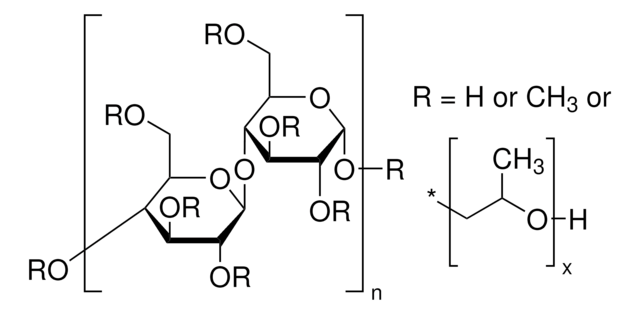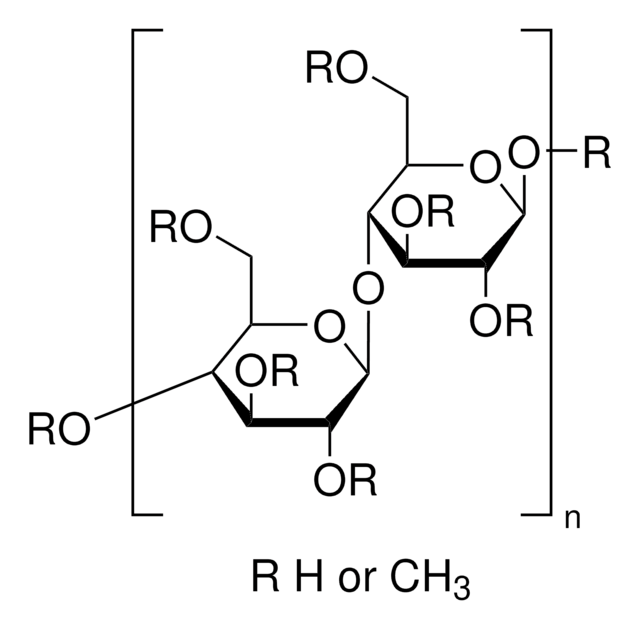H7509
(Hydroxypropyl)methyl cellulose
viscosity 2,600-5,600 cP, 2 % in H2O(20 °C)(lit.)
Synonyme(s) :
2-Hydroxypropyl methyl cellulose ether
About This Item
Produits recommandés
Source biologique
plant
Forme
powder
Poids mol.
~86 kDa
Couleur
white to off-white
Viscosité
2,600-5,600 cP, 2 % in H2O(20 °C)(lit.)
Solubilité
water: 10 mg/mL, clear to very slightly hazy, colorless
Température de stockage
room temp
Vous recherchez des produits similaires ? Visite Guide de comparaison des produits
Description générale
Application
- as a viscosity modifier in the preparation of printable ink
- as a viscosifier in the preparation of hydroxyapatite (HAP) suspension
- in the preparation of HPMC gels and composite gels
Actions biochimiques/physiologiques
Caractéristiques et avantages
Autres remarques
Code de la classe de stockage
11 - Combustible Solids
Classe de danger pour l'eau (WGK)
WGK 1
Point d'éclair (°F)
Not applicable
Point d'éclair (°C)
Not applicable
Équipement de protection individuelle
Eyeshields, Gloves, type N95 (US)
Certificats d'analyse (COA)
Recherchez un Certificats d'analyse (COA) en saisissant le numéro de lot du produit. Les numéros de lot figurent sur l'étiquette du produit après les mots "Lot" ou "Batch".
Déjà en possession de ce produit ?
Retrouvez la documentation relative aux produits que vous avez récemment achetés dans la Bibliothèque de documents.
Les clients ont également consulté
Notre équipe de scientifiques dispose d'une expérience dans tous les secteurs de la recherche, notamment en sciences de la vie, science des matériaux, synthèse chimique, chromatographie, analyse et dans de nombreux autres domaines..
Contacter notre Service technique



